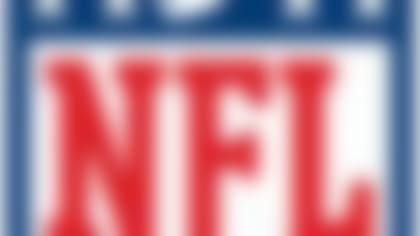Whenever a player or coach faces a former team, he has the opportunity to take advantage of the secrets and knowledge acquired at the previous stop.
The San Diego Chargers are hoping coach Mike McCoy, who spent the past four years with the Denver Broncos, can craft a plan to slow down Peyton Manning and the NFL's most explosive attack when the rivals face off Sunday. The Broncos will make adjustments in an attempt to keep their former offensive coordinator from getting a bead on their game plan, but McCoy's firsthand experience definitely will help him prepare his troops for this key AFC West bout. Meanwhile, the Broncos' coaching staff must prepare without John Fox, whose health situation has forced Jack Del Rio to take over as interim coach.
Here's why McCoy might be able to give his team an inside edge:
1) McCoy knows the strengths and weaknesses of Denver's personnel.
During McCoy's tenure with the Broncos, he played a major role in acquiring most of the talent currently on the roster, from offering his opinions on potential draftees to studying the top free agents available each offseason. McCoy extensively studied most of Denver's offensive players and constructed game plans around their collective strengths and weaknesses. This gives him a unique perspective on how to attack the Broncos from a tactical standpoint.
For instance, McCoy's relationship with Manning likely featured plenty of conversations about the quarterback's favorite plays to run in certain situations. They also undoubtedly discussed which blitzes and coverages give the veteran the most problems, and how certain tactics disrupt his rhythm in the pocket. Additionally, McCoy knows Manning's limitations as a passer, including his underwhelming arm strength, velocity and touch on vertical throws. As a result, McCoy can advise the Chargers' defenders on how to play against the wily veteran.
McCoy's knowledge of the individual talents of Demaryius Thomas, Eric Decker and Julius Thomas will allow him to provide the Chargers' secondary with keen insight on how to handle these dangerous playmakers in isolated matchups. McCoy will be able to clue in his defenders on each player's favorite route, and how they like to set up cornerbacks with various fakes and stems. Most importantly, he can advise his cornerbacks on which techniques or leverage positions present the most problems for each receiver. This should help the Chargers take away the deep ball on some of the double moves and vertical routes that have given other teams trouble this season.
Of course, effective defense against the Broncos begins at the line of scrimmage. I looked back at Denver's five losses over the past two seasons and found that the most successful defenses have been able to knock the offensive line off the ball and consistently harass Manning in the pocket. To do this, McCoy could give his defensive coaches a specific offensive lineman to target, based on his prior knowledge. For example, McCoy watched starting left tackle Chris Clark develop on the practice field in prior seasons before Clark was thrust into the starting lineup following Ryan Clady's season-ending injury in September. While Clark has played well in the Pro Bowl lineman's absence, he has just 12 career starts under his belt and surely has some weaknesses that can be exploited on passing downs.
2) McCoy understands the Broncos' scheme.
During McCoy's final season in Denver, he overhauled the offensive scheme to suit Manning's game. In Indianapolis, the four-time league MVP enjoyed tremendous success directing a no-huddle offense built on a few simple concepts in the passing game. McCoy took note of Manning's overwhelming success running that system and incorporated most of the veteran's previous scheme into the Broncos' playbook. He even ceded control of the play-calling to Manning, despite Fox's preference for a more conservative offensive approach.
In the process, McCoy truly learned the nuances of the system. From the checks and adjustments used to exploit specific defensive tactics to the various protection calls needed to combat blitzes, McCoy mastered one of the most productive offensive systems in recent NFL history. This will allow him to fully prepare his squad to defend the concepts that have given the Broncos' previous opponents problems.
Here are a few of those concepts:
SCREEN GAME
Manning was one of the first NFL quarterbacks to take advantage of the wide receiver screen. He prominently featured it during his time in Indy and repeatedly has used it in Denver to take advantage of the running skills of his receivers, particularly Demaryius Thomas.
In the screengrab below, taken from the Broncos' Week 8 win over the Washington Redskins, Thomas is aligned on the outside of a bunch formation, tasked with executing a key screen:
Thomas takes a few steps upfield before retreating to take the screen pass:
With his blockers moving defenders off the ball, Thomas weaves through traffic on his way to a 35-yard touchdown.
This play repeatedly comes up in film study -- click here for another example of Thomas running it to perfection. I believe McCoy will hammer home the idea that his players should anticipate the Broncos using it in the red zone this weekend.
When faced with blitz tactics, Manning will counter with delayed screens to exploit soft zone coverage.
In the screengrab below, the Broncos are lined up to run a slow screen to Knowshon Moreno, just behind a shallow crossing route:
Without any defenders in close proximity, Moreno turns the checkdown into a 35-yard touchdown.
PICK ROUTES
One constant of the Broncos' game plan is the use of pick routes near the end zone. A prominent part of Denver's attack a season ago, it has become an even bigger focal point since Wes Welker's arrival.
In the following screengrab, Welker is positioned in the slot in the Broncos' open dubs formation. Welker will run a stutter-flat route, with Demaryius Thomas setting a pick on the slot defender to create space for the Pro Bowl receiver:
Manning reads the route perfectly as Welker breaks open:
The result is a 6-yard score.
In the next screengrab, taken from Denver's Week 4 blowout of the Philadelphia Eagles, Welker is positioned on the inside of a bunch formation. He will run a stutter-flat route, with Thomas setting a pick on the middle defender:
Thomas sets a hard pick on the slot defender, creating room for Welker to run free to the flat for an easy reception from Manning:
This results in another 6-yard score for the Broncos.
PLAY-ACTION VERTICAL ROUTES
Manning is an outstanding play-action passer, particularly when throwing to crossing routes over the middle of the field. He draws linebackers to the line of scrimmage with convincing ball fakes in the backfield before targeting receivers running free between the hashes at intermediate and deep ranges. These throws are easier for the veteran to make at this stage of his career, given his waning arm strength and velocity, and the Broncos ride these concepts to create big-play opportunities.
In the following screengrab, taken from Denver's Week 7 loss to the Indianapolis Colts, Decker is aligned on the outside of a pistol dubs stack formation. He will run a deep post route on the outside, with Welker running a deep crosser over the middle:
On the snap, Manning will fake the ball to the running back -- to lure in the linebackers -- before tossing a deep ball over the top of the zone:
Decker makes a terrific grab for a 49-yard gain.
On the snap, Welker runs a deep crosser behind the linebackers to the opposite side of the field. With the Eagles' linebackers reacting aggressively to the run fake, Welker has a free path across the field:
Manning connects with Welker on a 33-yard pass for a first down.
3) McCoy knows the play-caller's tendencies.
Under McCoy, Manning thrived with the authority to make checks and adjustments, pushing the tempo with a no-huddle approach. Of course, McCoy offered significant input as the designer of the game plan, and the pair worked in concert to make sure the Broncos' offense stayed on schedule throughout the game.
The playoff picture

How would your team's prospects look if the season ended today? See where each team stands in the playoff picture midway through the season. **More ...**
Given this experience, McCoy should have a great grasp of how Manning prefers to call the game from the line of scrimmage. He likely knows Manning's preferences in critical game situations, too. What is Peyton's favorite call on third down? In the red zone? During a two-minute drill? McCoy likely has some answers, and this kind of information is invaluable when crafting a defensive strategy.
Additionally, McCoy's experience with Manning should help him devise blitz pressures that could rattle the quarterback's cage. Now, it's unlikely that the Chargers will be able to fool Manning on a consistent basis -- based on his superior football IQ and significant game experience -- but making him uncomfortable with a series of exotic looks could lead to a crucial turnover.
Here are three tactics to expect from the Chargers:
» Pre-snap uniformity: Manning has seen every conceivable look during his lengthy NFL career, so it is impossible to fool him with clever disguises. Therefore, the Chargers will be better served to just keep it simple and show a conventional "two shell" (Cover 2) look before adopting the assigned coverage after the snap. By using post-snap movement, the Chargers might be able to bait Manning into making a mistake that leads to a turnover from the pocket.
» Press coverage: The Colts successfully countered the Broncos' passing game in Week 7 by extensively playing bump-and-run coverage on the perimeter. The constant harassment of Thomas, Decker and Welker disrupted Manning's timing, leading to a few hurried throws from the pocket. Additionally, the tight man coverage eliminated the bubble screen.
Harrison: Week 10 Power Rankings
» Numerous schemes: Manning is one of the best rhythm passers in NFL history. He is exceptional at quickly delivering the ball after reaching the top of his drop, especially when he doesn't have to worry about rushers in his face in the pocket. That's why the Chargers can't afford to give Manning the same pressure/coverage schemes. If Peyton has a bead on an opponent's tactics, he will get the Broncos into the proper call to exploit it with effective counters. Therefore, the Chargers must abandon their conventional tendencies and keep Manning guessing in the pocket. If they are able to disrupt Manning's rhythm, they can dictate the terms and force the veteran into a disappointing game.
Follow Bucky Brooks on Twitter @BuckyBrooks.













